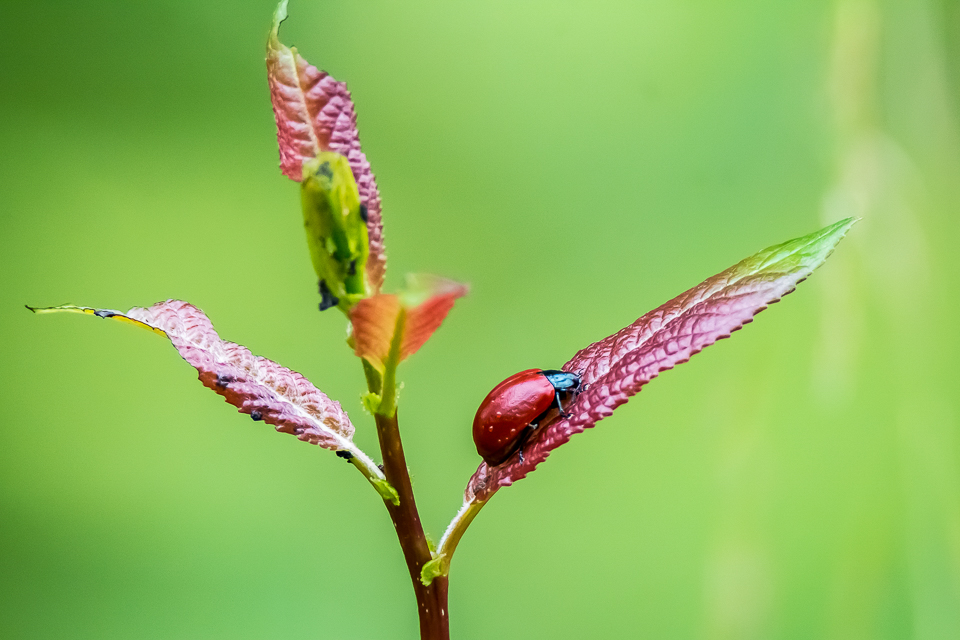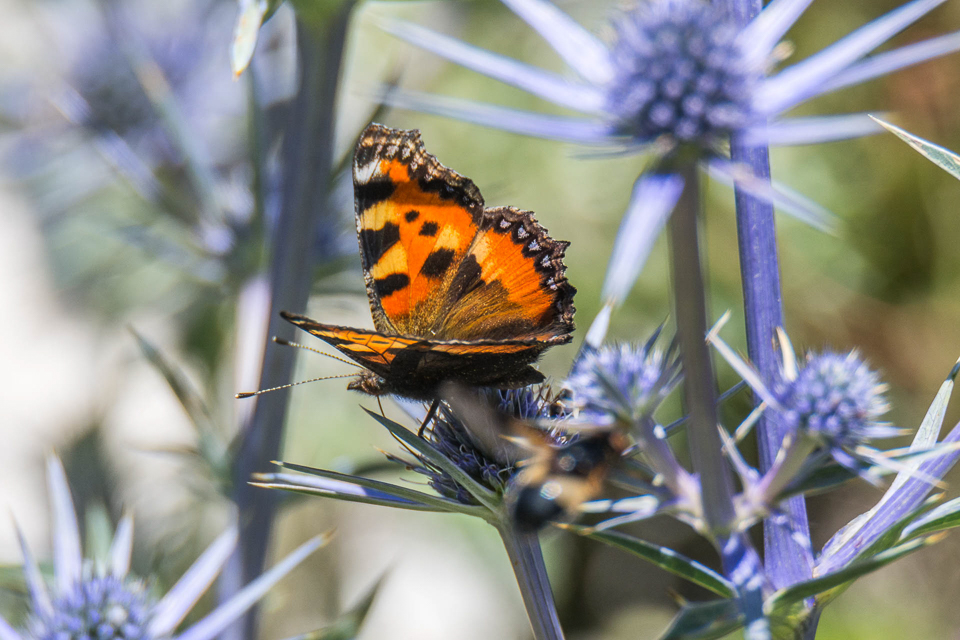-
Beetles
Beetles are a group of insects that form the order Coleoptera. The word "coleoptera" is from the Greek κολεός, koleos, meaning "sheath"; and πτερόν, pteron, meaning "wing", thus "sheathed wing", because most beetles have two pairs of wings, the front pair, the "elytra", being hardened and thickened into a shell-like protection for the rear pair and the beetle's abdomen. The order contains more species than any other order, constituting almost 25% of all known animal life-forms. About 40% of all described insect species are beetles (about 400,000 species), and new species are discovered frequently. The largest taxonomic family, the Curculionidae (the weevils or snout beetles), also belongs to this order. -
Flies
True flies are insects of the order Diptera, the name being derived from the Greek di = two, and ptera = wings. Insects of this order use only a single pair of wings to fly, the hindwings being reduced to club-like balancing organs known as halteres. Diptera is a large order containing an estimated 1,000,000 species including horse-flies, crane flies, hoverflies and others, although only about 125,000 species have been described. Flies have a mobile head, with a pair of large compound eyes, and mouthparts designed for piercing and sucking (mosquitoes, black flies and robber flies), or for lapping and sucking in the other groups. Their wing arrangement gives them great manoeuvrability in flight, and claws and pads on their feet enable them to cling to smooth surfaces. Flies undergo complete metamorphosis; the eggs are laid on the larval food-source and the larvae, which lack true limbs, develop in a protected environment, often inside their source of their food. The pupa is a tough capsule from which the adult emerges when ready to do so; flies mostly have short lives as adults. -
Bees, Bumblebees and Wasps
Hymenoptera is the third-largest order of insects, comprising:
- Bees and Bumblebees - Apidae.
- Wasps - Crabronidae
- Ichneumons - Ichneumonidae
- Sphecids - Sphecidae
- Sawflies - Sympytha
- Vespid Wasps - Vespidae
-
Butterflies
The Lepidoptera is an order of insects that includes moths and butterflies (both called lepidopterans). 180,000 species of Lepidoptera are described, in 126 families and 46 superfamilies, 10% of the total described species of living organisms. It is one of the most widespread and widely recognizable insect orders in the world. The term was coined by Linnaeus in 1735 and is derived from Ancient Greek λεπίδος (scale) and πτερόν (wing). The Lepidoptera show many variations of the basic body structure that have evolved to gain advantages in lifestyle and distribution. -
Scorpionflies
Mecoptera (from the Greek: meco- = "long", -ptera = "wings") are an order of insects with about 550 species in nine families worldwide. Mecoptera are sometimes called scorpionflies after their largest family, Panorpidae, in which the males have enlarged genitals that look similar to the stinger of a scorpion. The Bittacidae, or hangingflies, are a prominent family of elongate insects known for their elaborate mating rituals, in which females choose mates based on the quality of gift prey offered by various males. -
Net-winged insects
The insect order Neuroptera, or net-winged insects, includes the lacewings, mantidflies, antlions, and their relatives. The order contains about 6,000 species. -
True bugs
The Hemiptera or true bugs are an order of insects comprising some 50,000 to 80,000 species of groups such as the cicadas, aphids, planthoppers, leafhoppers, and shield bugs. They range in size from 1 mm to around 15 cm, and share a common arrangement of sucking mouthparts. The name "true bugs" is sometimes limited to the suborder Heteroptera. Many insects commonly known as "bugs" belong to other orders; for example, the lovebug is a fly,while the May bug and ladybug are beetles. -
Dragonflies and Damselflies
Odonata is an order of carnivorous insects, encompassing the dragonflies (Anisoptera) and the damselflies (Zygoptera). The Odonata form a clade, which has existed since the Triassic.
Dragonflies are generally larger, and perch with their wings held out to the sides; damselflies have slender bodies, and hold their wings over the body at rest.
Worldwide 5858 species are documented, most in warm regions. In the Netherlands 71 species are observed, of which 66 are considered native, one is considered a drifter and four are extinct in the Netherlands. -
Grasshoppers and crickets
The Orthoptera order of insects includes the grasshoppers, crickets, cave crickets, Jerusalem crickets, katydids, weta, lubber, Acrida, and locusts.
More than 27,000 species are distributed worldwide. Many insects in this order have paurometabolous or incomplete metamorphosis, and produce sound (known as a "stridulation") by rubbing their wings against each other or their legs, the wings or legs containing rows of corrugated bumps. The tympanum or ear is located in the front tibia in crickets, mole crickets, and katydids, and on the first abdominal segment in the grasshoppers and locusts. These organisms use vibrations to locate other individuals.








